Creamy Tomato Macaroni and Cheese
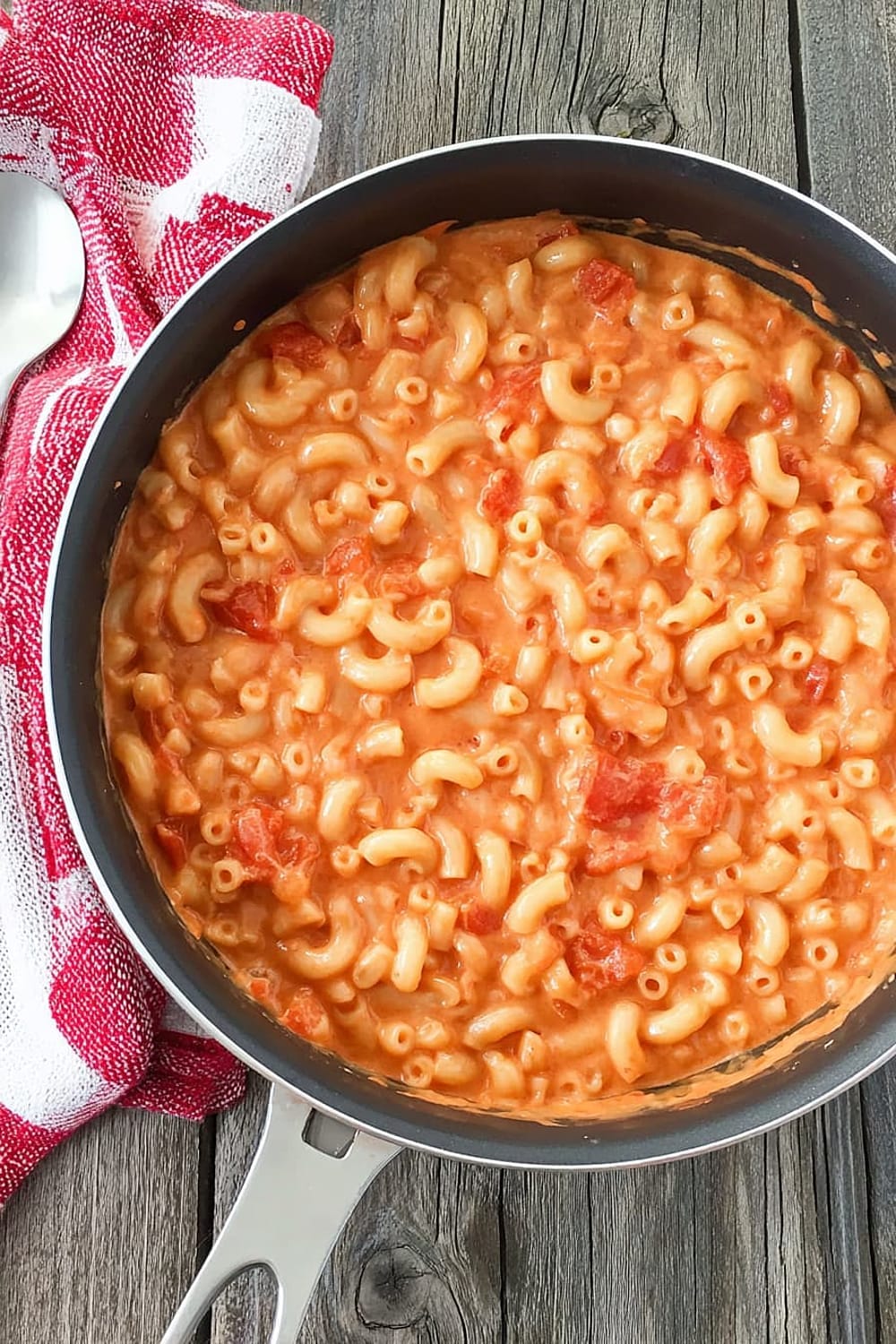
This isn’t your average box mac and cheese – this is the grown-up version that makes people stop mid-conversation to ask what smells so incredible.
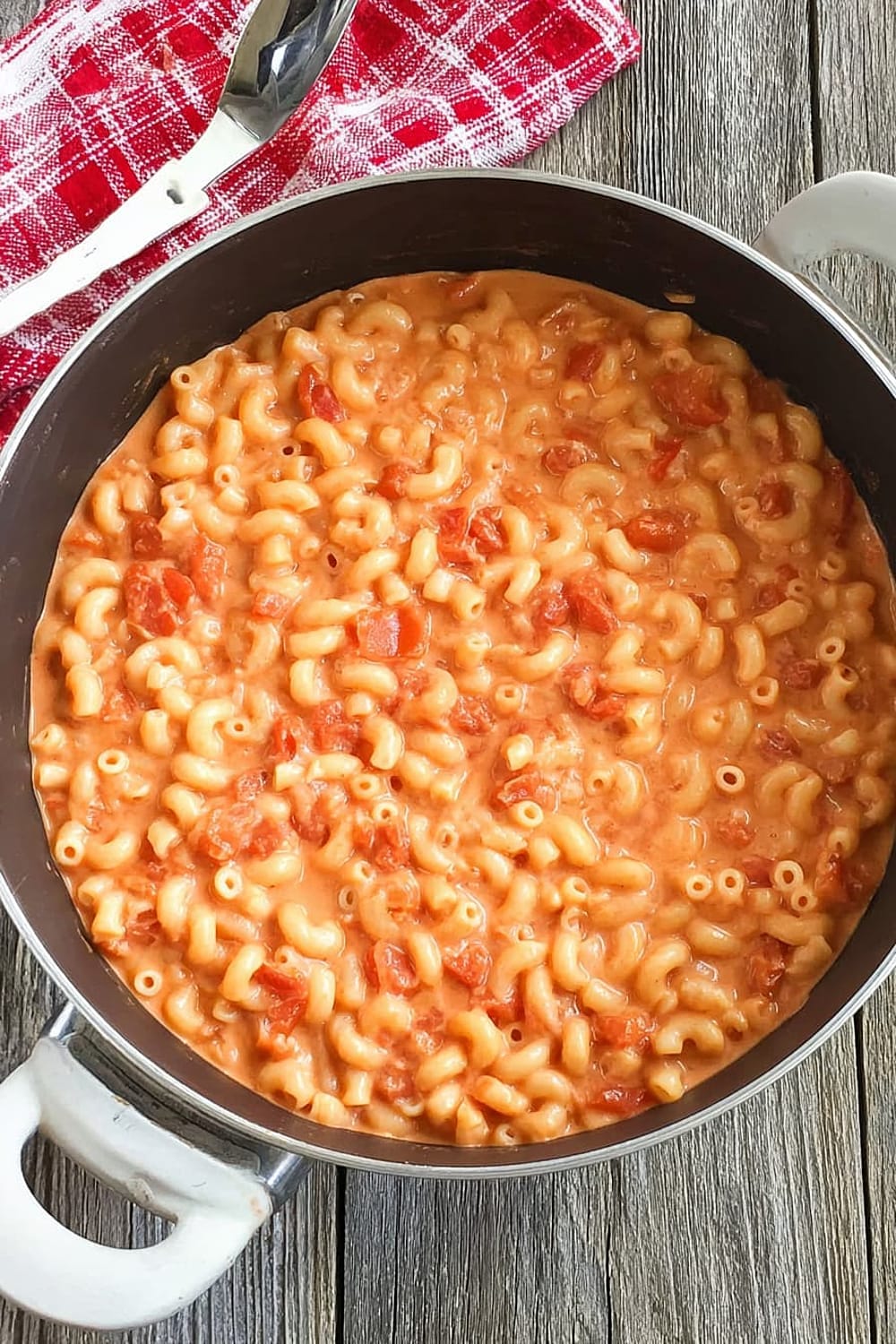
The secret weapon here is that tangy tomato paste working its magic with real cheese to create something that tastes like comfort food had a glow-up.
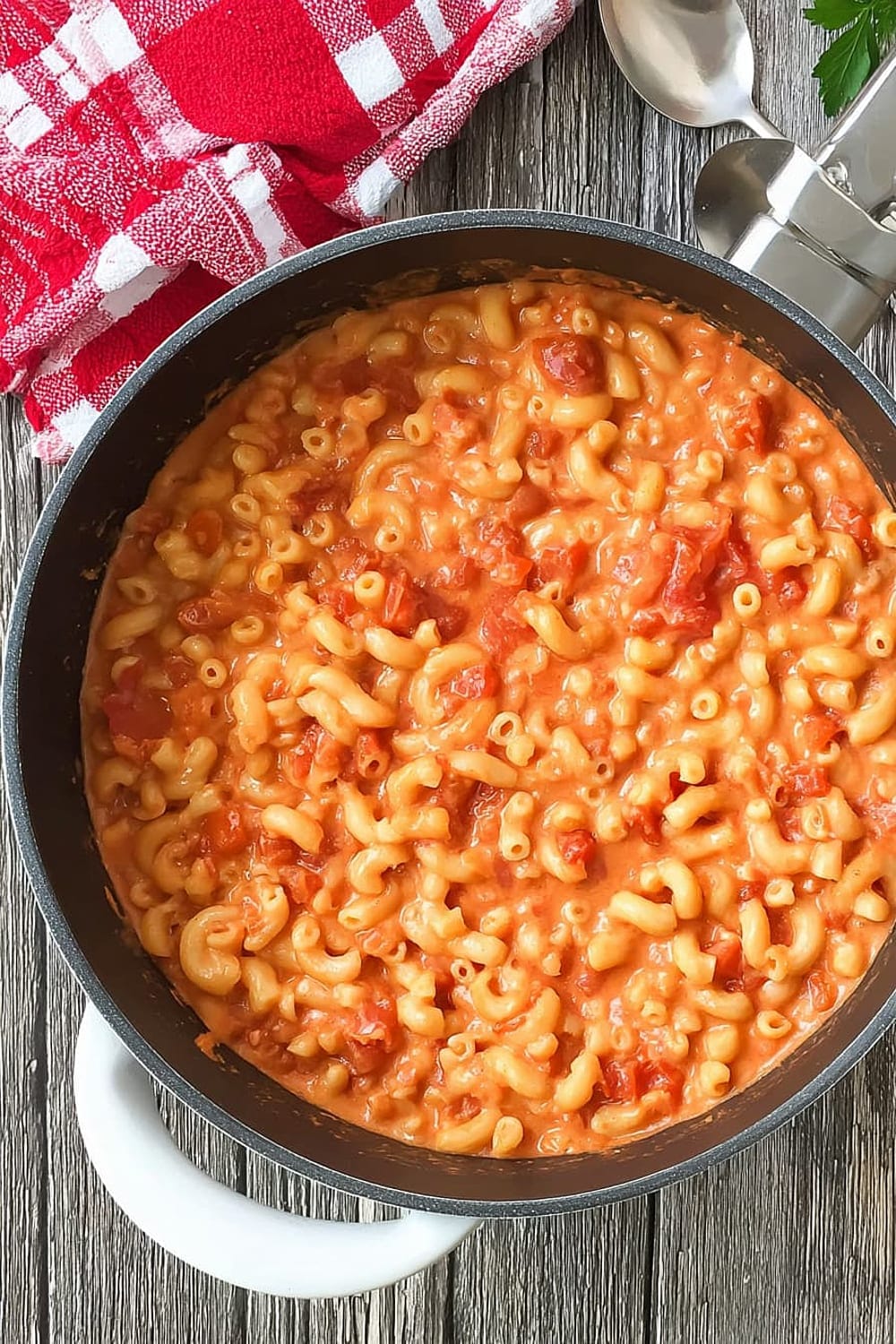
We’re talking about silky, restaurant-quality cheese sauce that clings to every elbow macaroni like it was meant to be there.
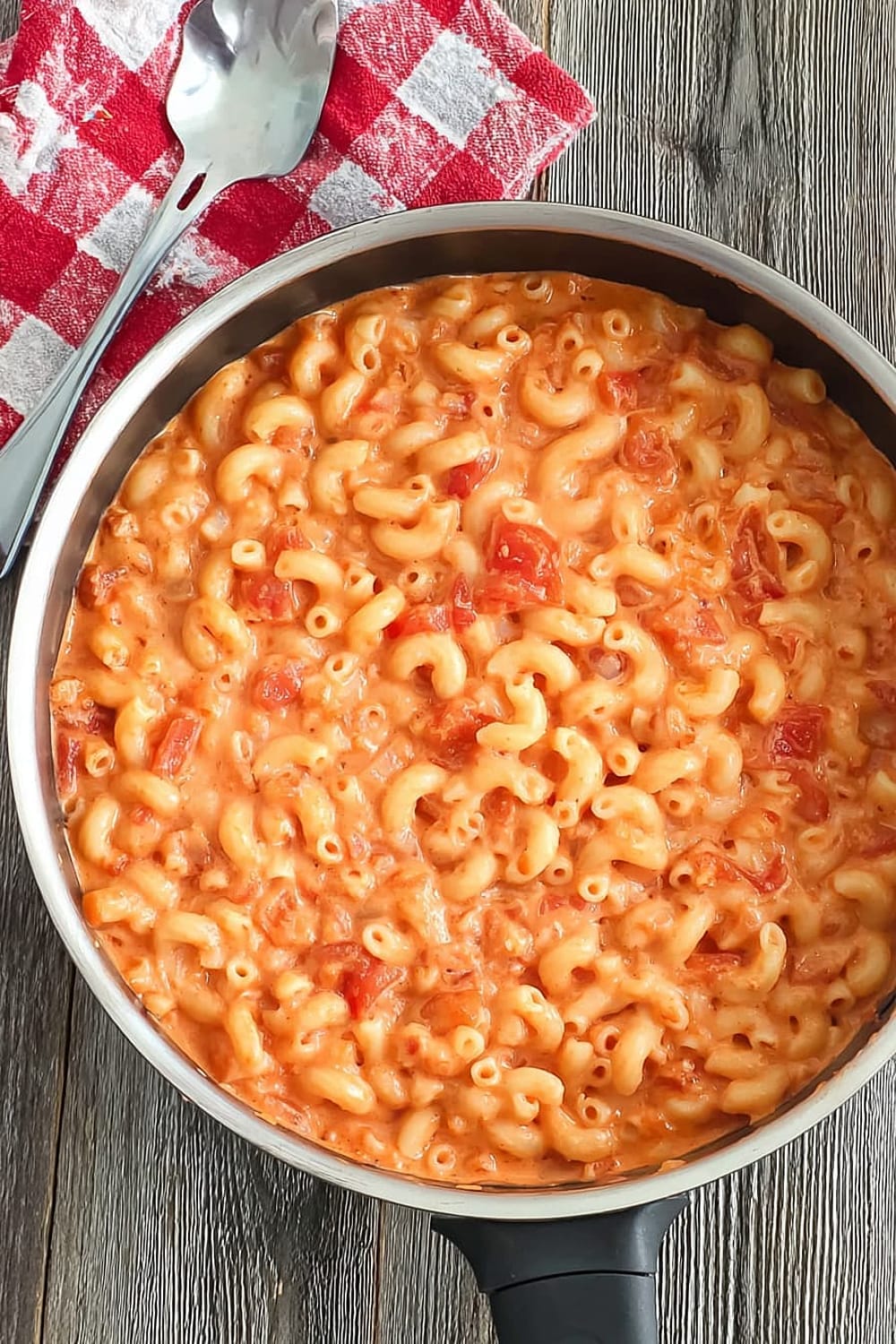
The best part is watching people take that first bite and get that slightly surprised look because they weren’t expecting something this good from what looks like a simple weeknight dinner.
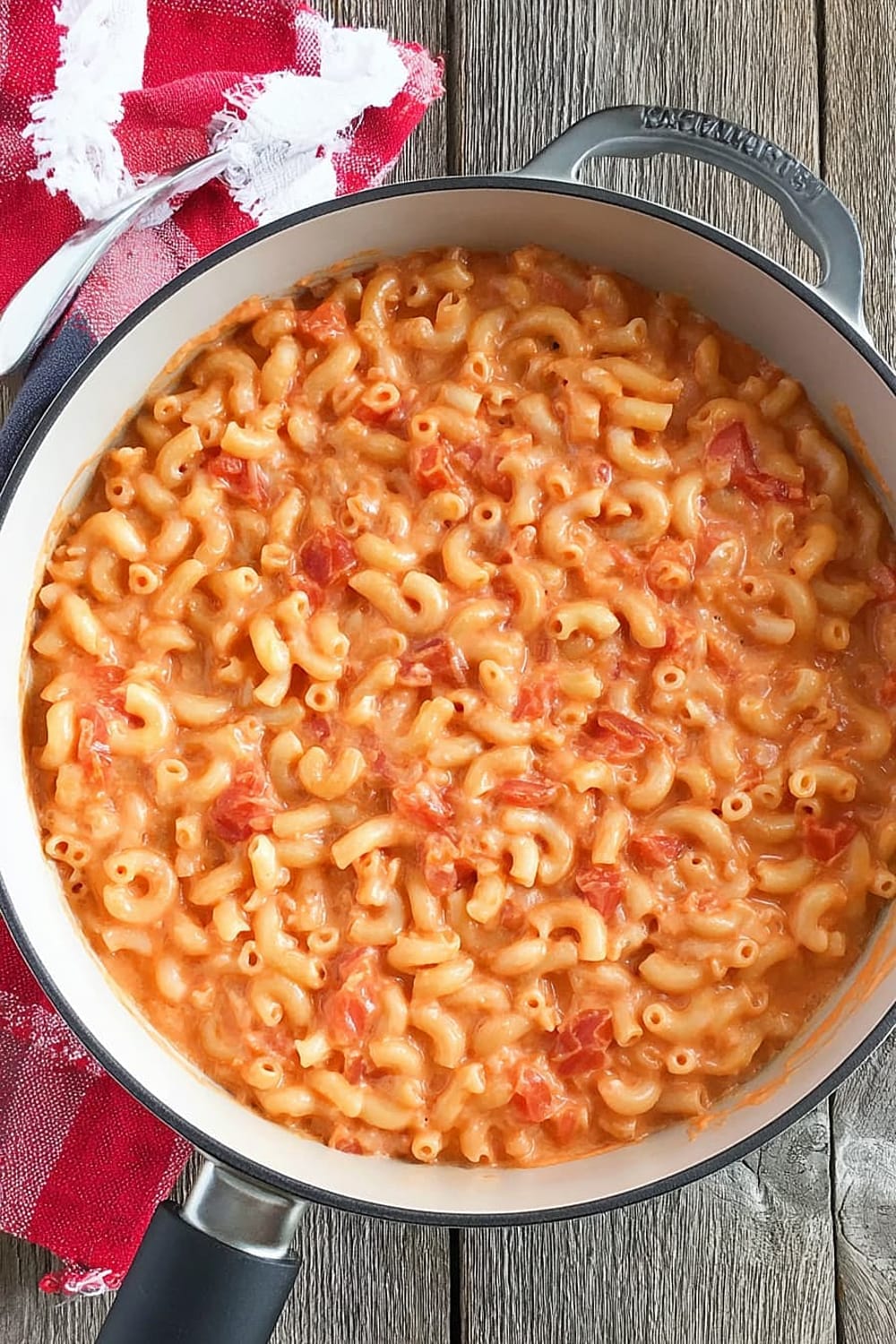
This recipe basically turns you into the person who “just throws things together” but somehow always makes it taste amazing – even though you’re totally following directions.
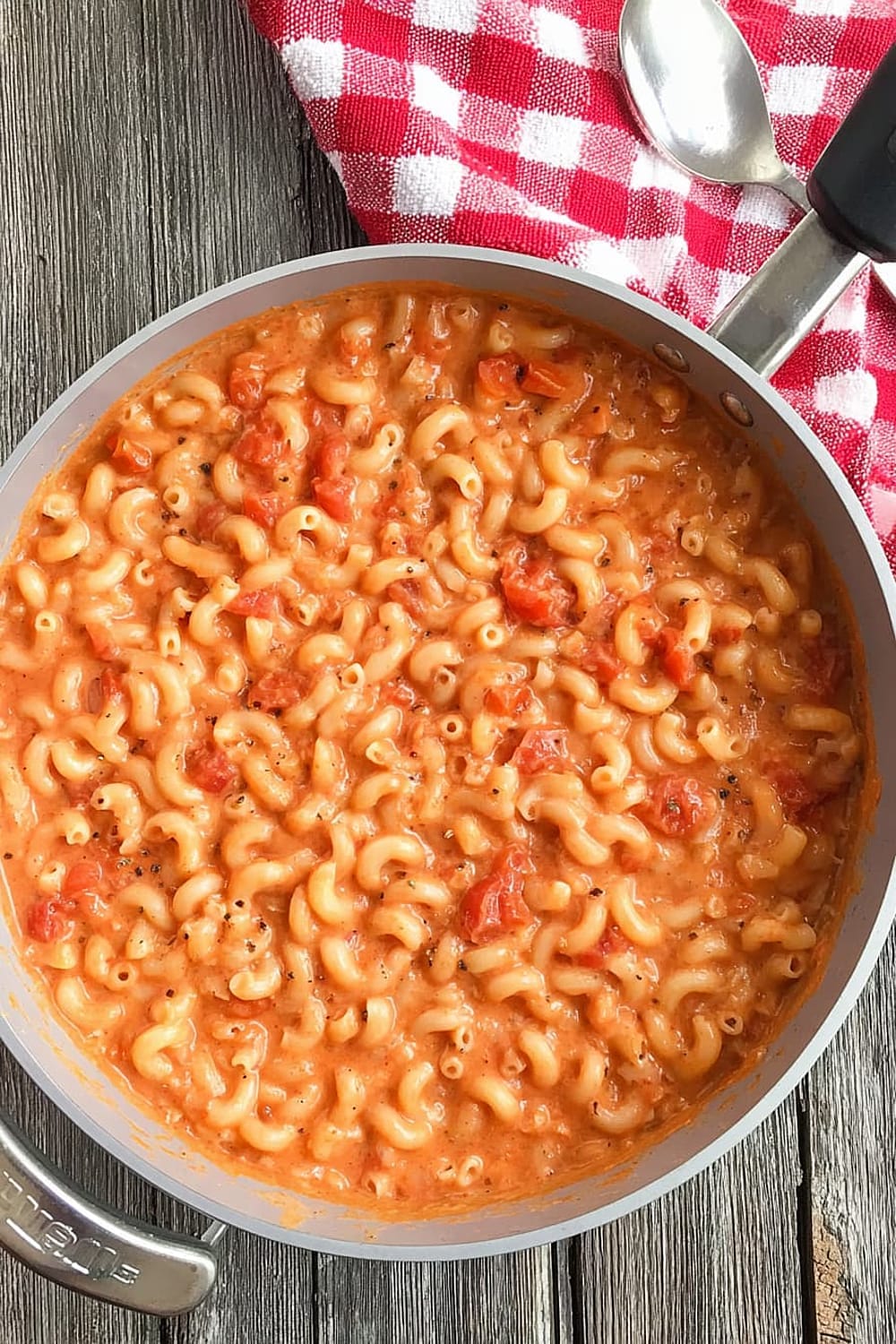
Fair warning: once you make this, regular mac and cheese is going to taste like disappointment in a bowl.
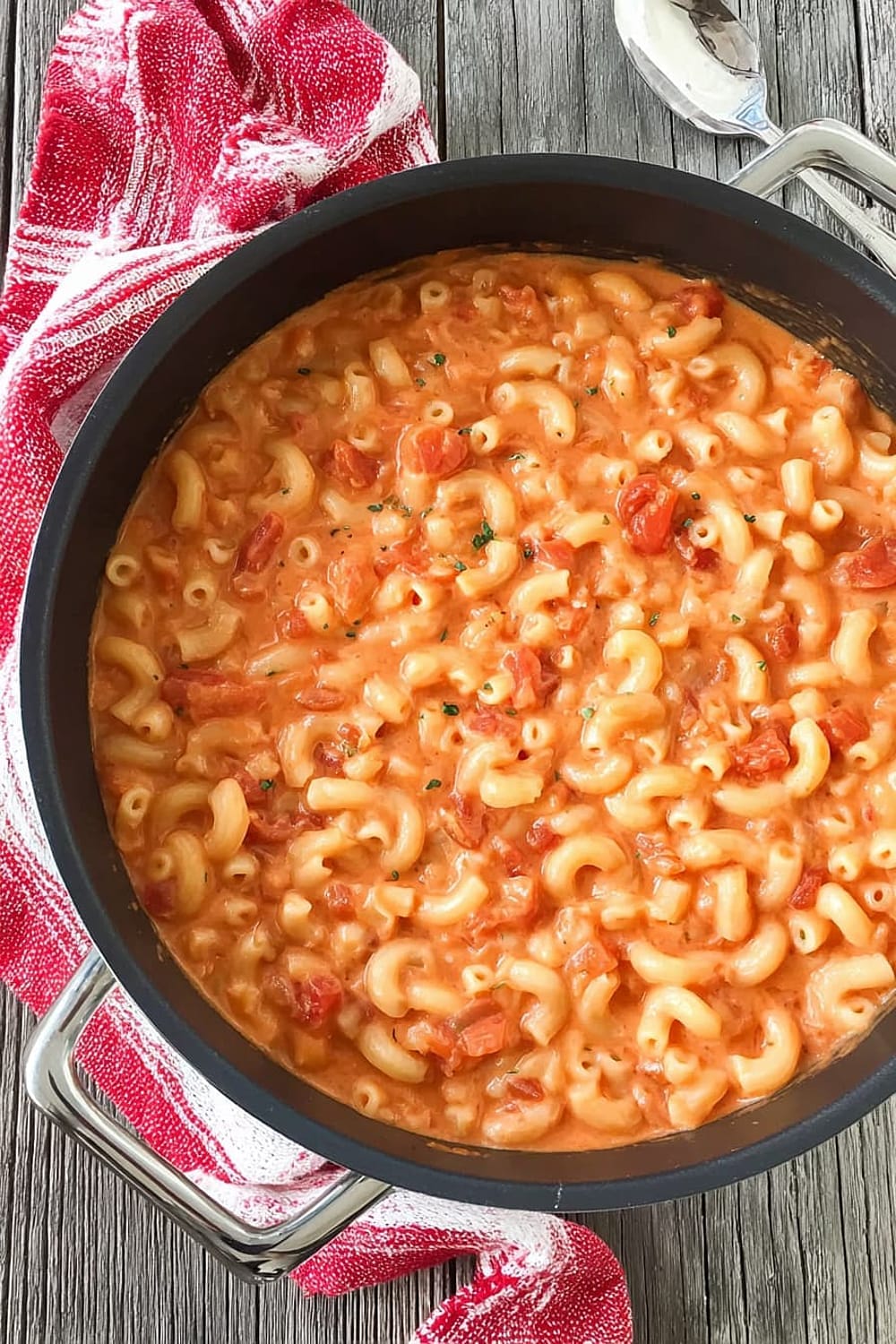
Ingredients
For the Pasta
- 1 lb elbow macaroni
- Salt for pasta water
For the Creamy Tomato Cheese Sauce
- 1 tbsp butter
- 2 cloves garlic, minced
- 1 small onion, chopped
- 2 tbsp all-purpose flour
- 1½ cups whole milk
- ¼ cup tomato paste
- 1 cup diced tomatoes (can use up to 1½ cups for extra tomato flavor)
- ½ tsp dried oregano
- 1½ cups cheese (mild, medium, or sharp Cheddar cheese or Monterey Jack), freshly grated
- 2 tbsp Parmesan cheese, freshly grated
- Salt and pepper to taste
Instructions
Prepare the Pasta
- 1 Bring a large pot of salted water to a rolling boil using a heavy-bottomed pot for even heat distribution. Cook the 1 lb elbow macaroni according to package directions until al dente, typically 8-10 minutes. The pasta should still have a slight bite since it will continue cooking when combined with the hot cheese sauce. Drain thoroughly in a colander and set aside, reserving ½ cup pasta water in case you need to thin the sauce later.
Build the Flavor Base
- 2 In a large, heavy-bottomed pan or cast iron skillet, melt the 1 tablespoon butter over medium heat until it stops foaming and starts to smell nutty, about 2-3 minutes. Add the chopped onion and minced garlic, cooking until the onion becomes translucent and lightly golden around the edges, approximately 5-7 minutes. Stir frequently to prevent the garlic from burning, which would create a bitter taste.
Create the Roux
- 3 Sprinkle the 2 tablespoons flour directly over the onion and garlic mixture, stirring constantly with a whisk or wooden spoon for 1-2 minutes. This creates a roux that will thicken your sauce and eliminate any raw flour taste. The mixture should become paste-like and smell toasty, not floury.
Add the Liquid
- 4 Gradually whisk in the 1½ cups milk, starting with just a splash to create a smooth paste, then slowly adding the rest while whisking continuously. This prevents lumps from forming. Cook over medium heat, stirring constantly, until the mixture thickens enough to coat the back of a spoon, about 3-5 minutes. The sauce should be smooth and creamy.
Incorporate the Tomato Elements
- 5 Stir in the ¼ cup tomato paste, 1 cup diced tomatoes, and ½ teaspoon dried oregano, mixing until the tomato paste is completely incorporated and no streaks remain. Continue cooking until the diced tomatoes are heated through and the sauce takes on a beautiful orange-pink color, about 3-4 minutes. The tomatoes should be tender but not mushy.
Melt in the Cheese
- 6 Remove the pan from direct heat and gradually stir in the grated Cheddar (or Monterey Jack) and Parmesan cheeses, adding them in small handfuls. Stir gently but continuously until each addition is completely melted before adding more. This prevents the cheese from seizing up or becoming grainy. The sauce should be smooth and glossy.
Combine and Serve
- 7 Add the cooked pasta to the cheese sauce and gently fold together using a large spoon or tongs until every piece of macaroni is coated with the creamy tomato cheese sauce. If the sauce seems too thick, add a splash of the reserved pasta water. Taste and season with salt and pepper as needed.
- 8 Serve immediately while hot for the best texture and flavor. The cheese sauce will continue to thicken as it cools, so don’t let it sit too long before serving.
Recommended Equipment and Kitchen Tools
Essential Tools (for best results)
- Large, heavy-bottomed pot – Essential for cooking pasta evenly without hot spots that can cause sticking
- Heavy-bottomed saucepan or cast iron skillet – Provides even heat distribution for the cheese sauce, preventing scorching
- Wire whisk – Critical for creating a smooth, lump-free sauce when adding milk and melting cheese
- Wooden spoon or silicone spatula – Perfect for stirring without scratching your cookware
Helpful Upgrades
- Kitchen scale – For precise measurements, especially when grating your own cheese for consistent melting
- Microplane grater – Fresh grated cheese melts much better than pre-shredded, which contains anti-caking agents
- Fine-mesh strainer – Ensures perfectly smooth sauce if you encounter any lumps
- Instant-read thermometer – Helps maintain the ideal temperature range of 160-180°F for melting cheese without breaking
Nice-to-Have Options
- Immersion blender – Can quickly smooth out any lumps in the tomato cheese sauce if needed
- Large mixing bowls – Useful for combining pasta and sauce if your pan isn’t large enough
- Aluminum foil – Perfect for covering if you need to keep the dish warm in a low oven
Recipe Variations and Dietary Modifications
Gluten-Free Adaptation
- Replace regular elbow macaroni with gluten-free pasta (rice, corn, or chickpea-based work well)
- Substitute 2 tablespoons rice flour or cornstarch for all-purpose flour in the roux
- Cook gluten-free pasta 1-2 minutes less than package directions as it can become mushy quickly
- Add an extra 2-3 tablespoons cheese to help bind the sauce since gluten-free flours thicken differently
Dairy-Free Modifications
- Use plant-based butter and unsweetened oat milk or cashew milk for creaminess
- Replace cheese with nutritional yeast (start with ¼ cup) plus dairy-free cheese shreds
- Add 1 tablespoon tahini or cashew butter for extra richness and binding
- Include 1 teaspoon Dijon mustard for tangy depth that mimics cheese flavor
Protein-Packed Version
- Stir in 1 cup cooked ground turkey or chicken with the tomatoes
- Add ½ cup white beans or chickpeas for plant-based protein
- Mix in 2 cups fresh spinach during the last minute of cooking
- Top with toasted breadcrumbs mixed with extra Parmesan for crunch
Flavor Variations
- Italian-inspired: Add 1 teaspoon Italian seasoning and ¼ cup sun-dried tomatoes
- Spicy kick: Include ¼ teaspoon red pepper flakes and 1 diced jalapeño
- Herb-forward: Stir in 2 tablespoons fresh basil and 1 tablespoon fresh thyme
- Smoky depth: Add ½ teaspoon smoked paprika and 2 strips crumbled bacon
Nutritional Information and Health Benefits
Key Nutritional Highlights
This hearty serving provides approximately 420-480 calories per serving (based on 6-8 servings), with a balanced macronutrient profile of complex carbohydrates from the pasta, high-quality protein from the cheese, and beneficial compounds from the tomatoes. Each serving delivers roughly 18-20 grams protein, 15-18 grams fat, and 45-50 grams carbohydrates, making it a satisfying meal that provides sustained energy.
Health Benefits of Main Ingredients
The tomato paste and diced tomatoes are nutritional powerhouses, providing lycopene, a potent antioxidant that becomes more bioavailable when cooked with fats like cheese. Cheddar and Parmesan cheeses supply complete proteins containing all essential amino acids, plus significant amounts of calcium for bone health and vitamin B12 for nervous system function. The whole milk adds additional protein and calcium, while the garlic and onions contribute prebiotic compounds that support digestive health and provide sulfur compounds with anti-inflammatory properties.
Dietary Considerations
This recipe contains gluten (from pasta and flour), dairy (milk and cheese), and is vegetarian-friendly. Each serving provides approximately 25-30% of daily calcium needs and 20-25% of daily protein requirements. The combination of carbohydrates and protein makes it an excellent post-workout meal, while the calcium content supports bone health for growing children and adults.
Smart Swaps and Ingredient Substitutions
Common Substitutions:
- Elbow macaroni → Penne, shells, or rotini work equally well for sauce adherence
- Whole milk → 2% milk plus 1 tablespoon heavy cream for richness, or evaporated milk diluted 1:1 with water
- Fresh garlic → 1 teaspoon garlic powder (add with the oregano to prevent burning)
- Tomato paste → 2 tablespoons ketchup plus ½ teaspoon tomato powder for similar concentration
Budget-Friendly Swaps:
- Sharp Cheddar → Mild Cheddar or American cheese for similar melting properties
- Fresh Parmesan → Pre-grated Parmesan (use 3 tablespoons instead of 2 for flavor)
- Diced tomatoes → 1 large fresh tomato, diced and salted for 10 minutes to draw out excess moisture
- Butter → Vegetable oil or olive oil (use same amount)
Pantry Emergency Substitutions:
- Fresh onion → 1 tablespoon onion powder mixed into the flour
- Dried oregano → 1 tablespoon fresh oregano or ½ teaspoon Italian seasoning
- All-purpose flour → Cornstarch (use 1 tablespoon mixed with 2 tablespoons cold milk)
Pro Tips for Substitutions:
- When using pre-shredded cheese, toss with 1 teaspoon flour to help it melt smoothly
- Store leftover tomato paste in ice cube trays for perfect portions in future recipes
- Room temperature ingredients blend more easily and create smoother sauces
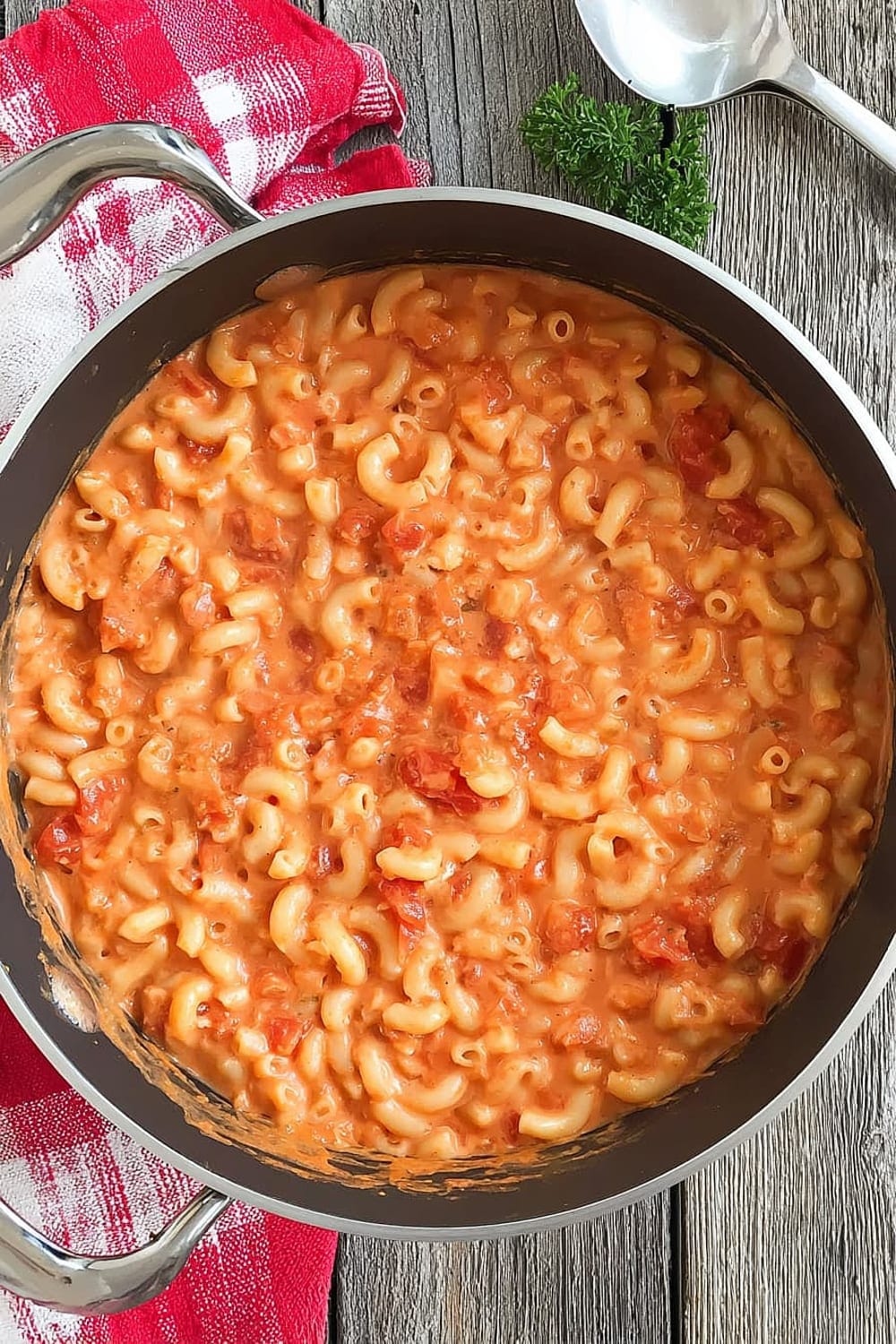
Make It Diabetes-Friendly
Carb Reduction Strategies:
- Replace regular pasta with shirataki noodles or zucchini spirals to reduce carbs by 75-80%
- Use chickpea or lentil pasta for higher protein and fiber while reducing net carbs by 30-40%
- Substitute half the pasta with steamed cauliflower florets for a 50% carb reduction
- Try spaghetti squash as a complete pasta replacement for 90% fewer carbs
Sauce Modifications:
- Replace all-purpose flour with almond flour or coconut flour (use 1 tablespoon instead of 2)
- Use unsweetened almond milk instead of whole milk to reduce carbs by 8-10 grams per serving
- Choose full-fat cheese over reduced-fat versions for better satiety and blood sugar stability
- Add extra vegetables like diced bell peppers or mushrooms to increase fiber and reduce carb density
Portion & Timing Tips:
- Serve ¾ cup portions instead of full cups to reduce carb load to 25-30 grams
- Pair with a large green salad and 4-6 oz lean protein for balanced blood sugar response
- Add 1 tablespoon olive oil or chopped nuts for healthy fats that slow carb absorption
- Time consumption post-workout when muscles can better utilize carbohydrates
Total Carb Reduction: These modifications can reduce net carbs from 45-50 grams to 15-25 grams per serving
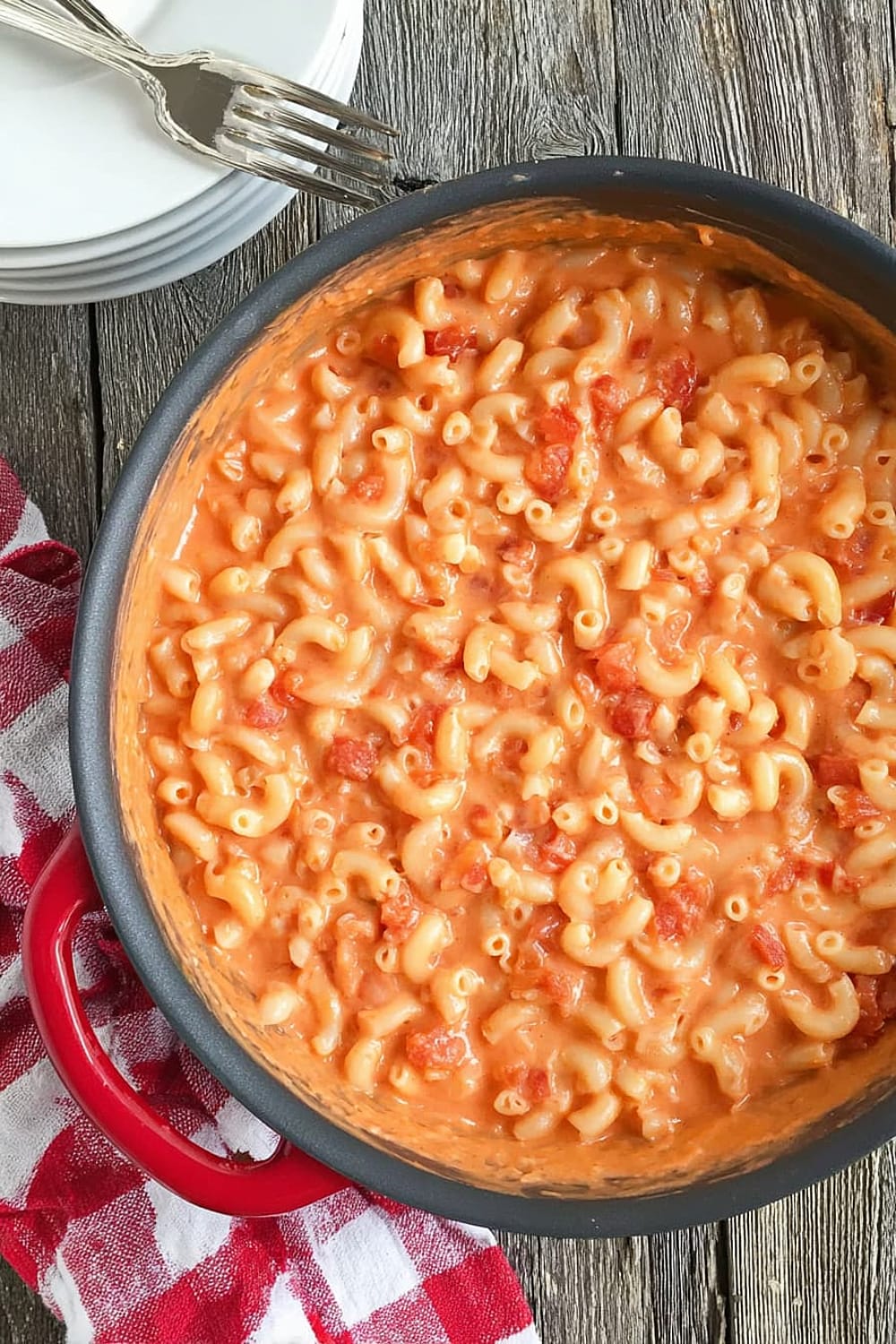
Perfect Pairing Suggestions
Beverage Pairings
A medium-bodied Chianti or Sangiovese complements the tomato elements beautifully, while the acidity cuts through the rich cheese sauce. For beer lovers, a wheat beer or light lager provides refreshing contrast without competing with the creamy flavors. Sparkling water with lemon or iced tea with fresh herbs offers non-alcoholic options that cleanse the palate between bites.
Side Dish Recommendations
Garlic roasted broccoli or Brussels sprouts provide bitter notes that balance the rich, creamy pasta perfectly. A crisp Caesar salad with crunchy romaine and tangy dressing cuts through the cheese while adding textural contrast. Roasted asparagus with lemon zest brings bright, fresh flavors that complement the tomato base. For heartier appetites, crusty sourdough bread with herb butter makes this a complete comfort meal.
Complete Meal Ideas
Start with bruschetta or caprese skewers to echo the Italian-inspired tomato theme. Follow the mac and cheese with a light arugula salad dressed in balsamic vinaigrette to cleanse the palate. For dessert, lemon sorbet or fresh berries with whipped cream provides a refreshing finish that won’t compete with the rich main course.
Occasion Suggestions
Perfect for casual family dinners, potluck gatherings, or comfort food cravings during cooler months. The elegant flavor profile makes it suitable for informal entertaining, while the familiar format appeals to kids and adults alike. Ideal for meal prep since it reheats beautifully and actually improves in flavor after a day in the refrigerator.
Pro Tips and Troubleshooting
Professional Techniques
Grate your own cheese from a block rather than using pre-shredded – the anti-caking agents in pre-shredded cheese can prevent smooth melting and create a grainy texture. Salt your pasta water generously (it should taste like seawater) to ensure the pasta itself is well-seasoned. Remove the pan from heat before adding cheese to prevent the proteins from seizing and creating a broken, oily sauce.
Common Mistake Prevention
If your cheese sauce breaks or becomes grainy, remove from heat immediately and whisk in 1-2 tablespoons cold milk or reserved pasta water while whisking vigorously. Don’t let the sauce boil once you’ve added the cheese – high heat will cause the proteins to separate. Undercook the pasta slightly since it will continue cooking in the hot cheese sauce.
Storage and Reheating
Store leftovers in the refrigerator for up to 4 days in an airtight container. To reheat, add 2-3 tablespoons milk and warm gently in the microwave in 30-second intervals, stirring between each, or reheat on the stovetop over low heat. The sauce will thicken considerably when cold, so the extra liquid is essential for proper reheating.
Make-Ahead Strategy
You can prepare the cheese sauce up to 2 days ahead and store it separately from the pasta. Cook the pasta 1 minute less than package directions if combining later. Keep finished mac and cheese warm in a 300°F oven for up to 15 minutes covered with foil, as noted in the original recipe.
This creamy tomato macaroni and cheese proves that sometimes the best comfort food comes from taking a classic and giving it just enough of a twist to make it feel special again – without losing any of that nostalgic, soul-warming satisfaction that makes mac and cheese such a beloved dish.